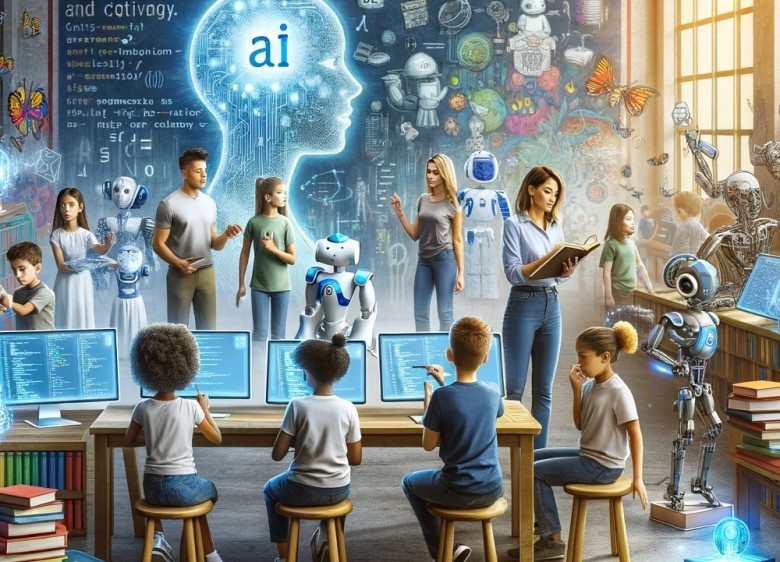18
views
views
The White House has unveiled a Task Force on Artificial Intelligence Education to enhance AI literacy among U.S. youth, aiming to secure America's leadership in global AI innovation. Learn how this initiative plans to shape the future of tech education.

In a bold move to secure America’s position as a global leader in artificial intelligence (AI), the White House announced the formation of a Task Force on Artificial Intelligence Education on May 17, 2025. This initiative aims to empower U.S. youth with the skills and knowledge needed to thrive in an AI-driven world, ensuring the nation remains at the forefront of technological innovation. As AI continues to reshape industries, economies, and societies, this task force signals a proactive step toward building a future-ready workforce.
Why AI Literacy Matters
Artificial intelligence is no longer a futuristic concept—it’s a driving force behind advancements in healthcare, transportation, education, and more. From generative AI tools like chatbots to machine learning algorithms powering autonomous vehicles, AI is transforming how we live and work. However, the rapid pace of AI development has created a skills gap, with many young Americans unprepared to navigate or contribute to this evolving landscape.
The White House’s Task Force on Artificial Intelligence Education seeks to address this gap by promoting AI literacy among K-12 students and beyond. AI literacy encompasses understanding the basics of AI, its applications, ethical considerations, and its societal impact. By equipping students with these skills, the U.S. aims to foster a generation of innovators who can lead in AI research, development, and policy.
Goals of the AI Education Task Force
The task force, established under the Biden administration, has outlined several key objectives:
-
Curriculum Development: Collaborate with educators, tech companies, and AI experts to integrate AI concepts into school curricula, ensuring age-appropriate learning for students from elementary to high school.
-
Teacher Training: Provide professional development programs to equip teachers with the tools and knowledge to teach AI effectively.
-
Access and Equity: Ensure underserved communities, including rural and low-income areas, have access to AI education resources, bridging the digital divide.
-
Public Awareness: Promote the importance of AI literacy through campaigns and partnerships, encouraging parents, students, and communities to embrace AI education.
-
Industry Collaboration: Work with leading tech firms like Google, Microsoft, and Nvidia to provide real-world insights and resources for students.
By focusing on these areas, the task force aims to create a comprehensive ecosystem that supports AI education across the United States.
Why This Initiative Is a Game-Changer
The launch of the AI Education Task Force comes at a critical time. According to a 2024 report by the National Science Foundation, the U.S. faces growing competition from countries like China and the European Union in AI research and development. To maintain its edge, the U.S. must invest in its human capital—starting with its youth.
This initiative is not just about technical skills. It also emphasizes ethical AI use, teaching students to consider the societal implications of AI, such as bias in algorithms and privacy concerns. By fostering a holistic understanding of AI, the task force ensures that future leaders are equipped to develop technologies that are both innovative and responsible.
Moreover, the task force aligns with broader STEM (Science, Technology, Engineering, and Mathematics) education goals. By introducing AI concepts early, it encourages students to pursue careers in high-demand fields, boosting the U.S. economy and global competitiveness.
Challenges and Opportunities
While the task force’s goals are ambitious, challenges remain. Integrating AI into already crowded school curricula requires significant resources and coordination. Additionally, ensuring equitable access to AI education in underserved communities will demand targeted investments in infrastructure and training.
However, the opportunities are immense. By prioritizing AI literacy, the U.S. can cultivate a diverse pipeline of talent, including women and minorities who are historically underrepresented in tech. This diversity is crucial for developing AI systems that reflect a wide range of perspectives and needs.
What’s Next for AI Education in the U.S.?
The Task Force on Artificial Intelligence Education is expected to roll out pilot programs in select school districts by fall 2025, with plans for nationwide expansion by 2027. The White House has also hinted at potential federal funding to support these efforts, though details are still forthcoming.
For parents, educators, and students, this initiative offers a chance to get ahead in the AI revolution. Schools interested in participating can stay updated through the U.S. Department of Education’s website, which will provide resources and application details.
Join the AI Education Movement
The White House’s AI Education Task Force is a landmark step toward preparing U.S. youth for a future dominated by artificial intelligence. By fostering AI literacy, the U.S. is not only investing in its students but also securing its place as a global tech leader.
Want to learn more about AI education or get involved? Share your thoughts in the comments below, and stay tuned for updates on how this initiative is shaping the future of tech in America.




















Comments
0 comment